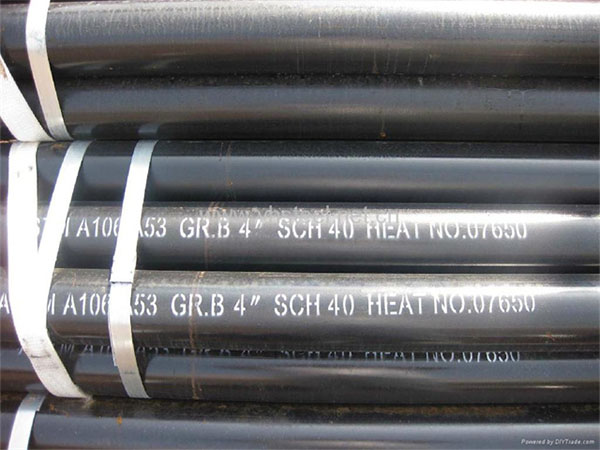A53 steel pipe is a kind of carbon steel pipe widely used for transporting water, gas, steam and structural purposes. Due to its good mechanical properties and economy, it holds an important position in construction, infrastructure and industrial systems. To ensure its reliability and durability in various application scenarios, A53 steel pipes need to undergo strict raw material control, forming processes and quality inspection during the manufacturing process. Depending on the product type, A53 steel pipes can be classified into seamless pipes and welded pipes (such as ERW), each with its own production process characteristics, covering multiple key links from steelmaking, forming to heat treatment and inspection.
1. Preparation of raw materials and steelmaking
Raw material ratio
It is mainly carbon steel with a carbon content of 0.25% - 0.30% and a manganese content of 0.27% - 0.93%, which complies with the requirements of ASTM A53 standard. At the same time, the content of harmful elements such as sulfur and phosphorus needs to be controlled.

Steelmaking process
The process involves using a converter (BOF) or electric furnace (EAF) →LF refining → RH vacuum degassing to ensure stable chemical composition and few inclusions.
Continuous casting billet making
Molten steel is solidified into billets or slabs by a continuous casting machine, with dimensions generally ranging from 120×120 mm to 180×180 mm.
2. Heating and forming of steel billets
Seamless pipe: Heat the steel billet to 1200℃±20℃ to ensure its good plasticity. The steel billet is punched through the center in a Mannesmann punching machine (or a three-roll punching machine) to form a rough tube. The rough tubes are gradually expanded and sized by the hot rolling mill (rolling mill or billet pusher), while the wall thickness is controlled at the same time. Further correct the outer diameter and wall thickness with a sizing machine, and finally straighten it with a straightening machine. Cut the length to the standard length (6m, 12m).
Welded pipe: The large coil of steel strip is uncoiled and the elastic deformation is removed by a straightening machine. The steel strip is rolled step by step by a multi-roll forming machine to form a circular tube billet. The welding area of the tube blank is rapidly heated to approximately 1200℃ to activate the current in the metal and generate hot welding. High-frequency current is used to fuse the two edges into one under the action of the pressure roller, forming a longitudinal weld seam. Subsequently, the inner and outer sides of the weld bead need to undergo weld skin removal (grinding) treatment. Finally, the outer diameter and wall thickness are precisely controlled by a sizing machine. The straightening machine corrects slight bending.
3. Heat treatment and surface treatment
Normalizing (optional
According to the application requirements, normalize the steel pipe (850℃ to 900℃, air-cooled) to optimize the microstructure and mechanical properties.
Pickling and passivation
Welded pipes are often acid-washed to remove oxide scale. Carbon steel pipes can be phosphated or painted to prevent rust.
4. Inspection and Packaging
Non-destructive testing: Ultrasonic, magnetic particle, eddy current or radiographic testing is adopted to ensure that there are no defects inside and in the welds.
Mechanical property tests: tensile, bending, impact and other tests to ensure that tensile strength, yield strength, elongation, etc. comply with A53 standards.
Dimensional and appearance inspection: Inspect the outer diameter, wall thickness, tolerance and appearance quality of the pipe to ensure compliance with standards and no damage.
Packaging and storage: Apply anti-rust oil to the surface of the pipes, bundle them by length or weight, and label them. Store them in a dry and well-ventilated place to prevent rust.
Summary
A53 steel pipe is manufactured in two ways: seamless and welded. Through the above-mentioned strict steelmaking, forming, heat treatment and inspection processes, the produced A53 steel pipes can meet the ASTM A53 standards in terms of chemical composition, mechanical properties and appearance quality, and are widely used in construction, transportation, mechanical manufacturing and other fields.
